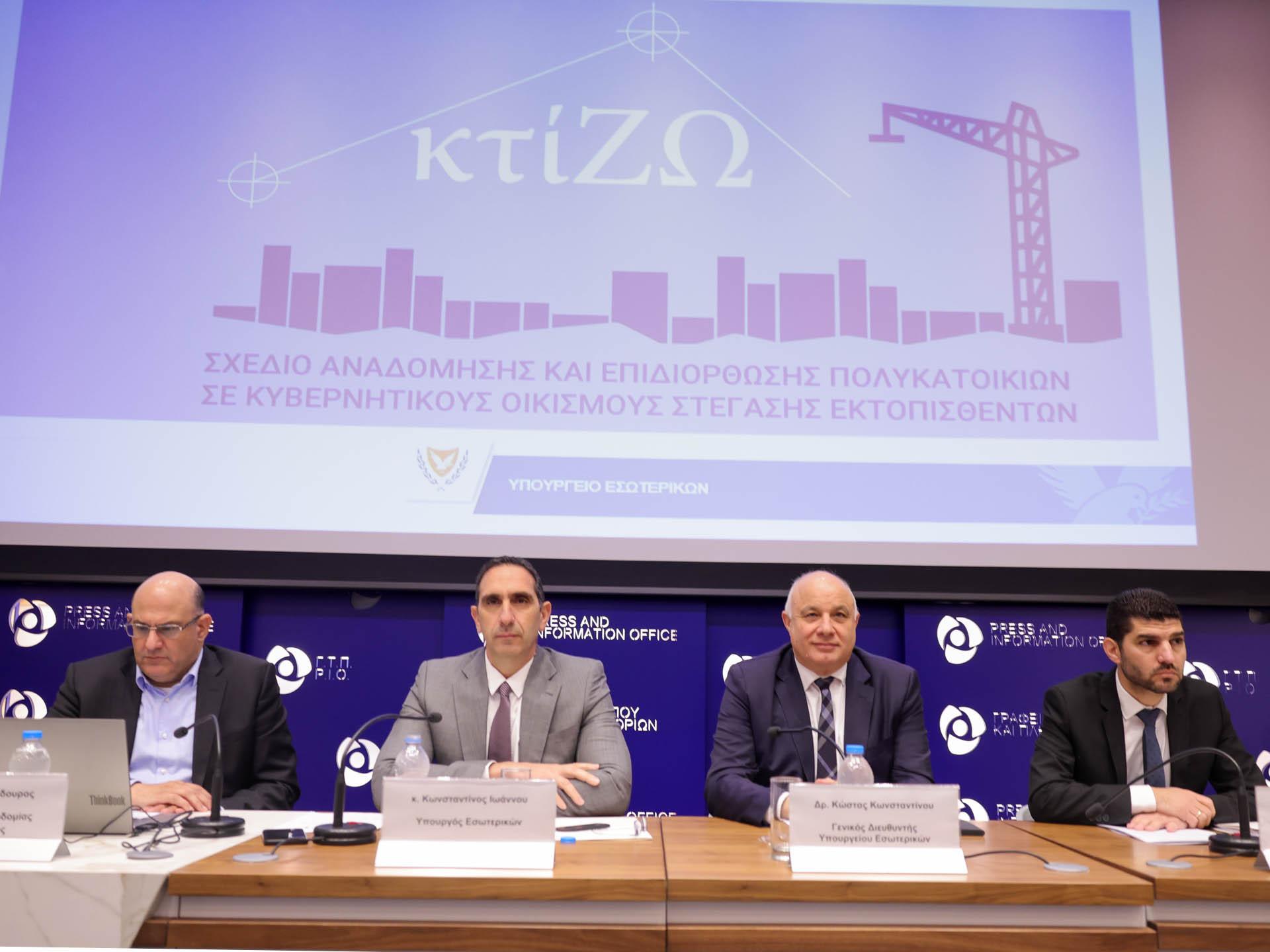A meeting of the Parliamentary Committee on Refugees was held in Cyprus on Monday 1st of July.
During the meeting, MPs discussed the implementation of the state programme "KtiZO".
It turned out that not everything is going as smoothly as originally planned. In particular, the mayor of Latsia (Nicosia district), Christos Pittaras, said that one of the main problems facing the beneficiaries of the programme was the refusal of loans by local banks. Pittaras stressed that no financial institution has yet agreed to provide loans to refugees, as most of them are elderly. He said that many beneficiaries do not have their own resources to cover the necessary payments under the programme. Pittaras called on the committee to intervene to find a solution to this particular problem, which he said could be a brake on the implementation of the plan.
The mayor also asked representatives of the Cypriot Interior Ministry to involve the Fair Burden Sharing Agency in the provision of loans to the resettled people involved in the project. He said that with a proper arrangement, the refugee problem would be solved and the need to, as he put it, "beg banks for loans" would disappear.
A representative of the Cyprus Housing Ministry, Irini Yiannakou, responded to Pittaras' question. She said that a possible solution to the problem could be to include the heirs of the beneficiaries in the programme. In other words, Yiannakou suggested that loans should not be given to elderly refugees, but to their next of kin. As for Pittaras' recommendation that the loans be issued by the Fair Burden Sharing Agency, she stressed that she would raise the issue with the relevant minister in the near future.

Напомним, чтогосударственная программа охватывает в общей сложности 358 зданий с 3 128 квартирами в Никосии, Лимассоле и Ларнаке.
Из них 43 были классифицированы как имеющие критические проблемы с устойчивостью и строительной конструкцией. Приоритет отдается именно этим, самым опасным, домам. Они будут снесены, а на их месте за три с половиной года построят новые здания.
Еще 70 домов имеют проблемы с устойчивостью в ряде структурных элементов, а 245 зданий – менее критические недостатки. Эти две группы зданий будут отремонтированы, сносить их не будут. Программа реновации рассчитана на 10 лет. К слову, жильцов 43 самых опасных жилых комплексов уже начали эвакуировать с выплатой субсидии.
Людям предложили на выбор два варианта:
- временно переселиться в другое место, а затем получить квартиру в новом доме, построенном на месте их снесенного комплекса;
- получить единовременную компенсацию от государства за свою недвижимость и за долю земельного участка.
Программа «КтиЗО» делит бенефициаров на три категории:
- Категория 1 включает беженцев в первом поколении, а также беженцев во втором, третьем и четвертом поколении, получивших аварийную недвижимость по наследству, если они имеют титул на собственность жилья.
- Категория 2 включает тех беженцев, кто купил недвижимость в жилых комплексах на деньги, которые им выделяло государство.
- Категория 3 включает жителей, купивших квартиру у беженцев.
Жители аварийного жилья, которые решили не получать квартиру в доме, построенном на месте снесенного, могут претендовать на компенсацию, размер которой будет зависеть от кадастровой стоимости недвижимости и земли. В случае если аварийный дом подлежит не сносу, а ремонту, государство покрывает эти расходы.
It should be recalled that the state programme covers a total of 358 buildings with 3,128 flats in Nicosia, Limassol and Larnaca.
Of these, 43 have been identified as having critical stability and structural problems. These buildings, the most dangerous, will be prioritised. They will be demolished and replaced by new buildings within three and a half years.
A further 70 buildings have stability problems in a number of structural elements and 245 buildings have less critical deficiencies. These two groups of buildings will be renovated rather than demolished. The renovation programme will last 10 years. The tenants of the 43 most dangerous apartment blocks have already started to leave in return for a subsidy.
People have been offered two options:
- temporarily move to another location and then receive an apartment in a new building that will replace their demolished complex; or
- receive a lump sum compensation from the state for their property and their share of the land.
The KtiZO programme divides beneficiaries into three categories:
- Category 1 includes first-generation refugees and second, third and fourth generation refugees who inherited emergency housing, if they have a housing title.
- Category 2 includes those refugees who bought flats in housing estates with money allocated to them by the state.
- Category 3 includes residents who bought a flat from refugees.
Residents of shelters who did not receive an apartment in a house built in place of the demolished one can claim compensation, the amount of which depends on the cadastral value of the property and land. If the shelter is to be repaired rather than demolished, the cost will be borne by the state.
